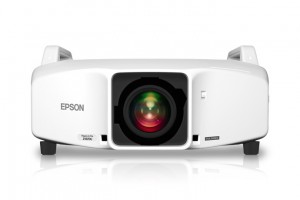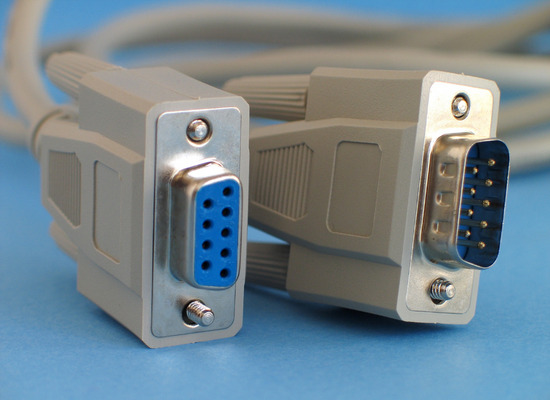by Ashley Nichols | Nov 23, 2022 | Uncategorized
This Blog Series is written by Exertis Almo's Business Development Managers:
Ashley Nichols, CTS, DSCE, and John Borns, CTS, DSCE.
Edition 01 of Our NEW Blog Series
Welcome to “There’s No Such Thing as a Dumb Question” – a hopefully regular blog series where two AV industry “veterans,” with a combined nearly 2 decades of experience, attempt to create a safe space for people of all experience levels to ask basic questions, and get understandable and useful answers.
Have You Ever Been Too Embarrassed to Ask a Question?
The AV industry is filled with jargon, acronyms, and experiential knowledge. If you’re anything like us, you’ve found yourself in conversations where you’ve had absolutely no idea what was going on.
If you’ve felt this way before, this blog series is for you!
Who Are We, Exactly?
We’re Business Development Managers (and buddies) at Exertis Almo. Prior to our time here, we broke into the AV industry working for a manufacturer. We both started in our 20s with absolutely no AV experience whatsoever. We worked in sales and had intimidating conversations with people who basically invented the industry – and we had to figure it out on own by asking a bunch of “dumb” questions.
Our Goal is to Open Up the AV Conversation
Our goal here is to give newcomers to the AV industry and fellow ‘veterans’ alike the knowledge and confidence to have conversations with more seasoned industry professionals – without feeling like you’re speaking different languages. We welcome all questions, whether or not you’re already certified! And if you already have your CTS-I/D, you’re welcome to contact us about topics we’re not explaining well enough. But enough about us, let’s get to some questions!
QUESTION
What is the difference between HDBaseT and AV-over-IP (sometimes called AVOIP)?
ANSWER
Did you know that video signals have length limitations? The signals can only be carried along their standard cables so far before the signal deteriorates or drops off completely. Both HDBaseT and AVOIP are ways to carry standard video signals over longer distances. They do this using magic black boxes (not black magic 😉✨) that convert the signal into a new format.
The source of the confusion comes from the fact that both HDBaseT6 and AVOIP use category cables1 to do the trick. In the case of HDBaseT, that category cable is dedicated between one video source and display. One box goes near the video source (camera, Blue-Ray Player, PC, etc.) and the other goes near the display. The 2 are connected by a category cable, allowing for the signal to travel greater distances (up to 100 meters). AVOIP7 operates similarly, using category cables and black boxes as well, the difference being that some of the boxes act as ENCODERS, which is a cool way of saying that they put your video signal onto the network. It then lives on the network2 waiting for a DECODER to come looking to it. The DECODER will find the network-encoded video signal and allow it to be displayed. Additionally, a PC or other network enabled devices can act as decoders as well and find that ‘encoded video signal’.
QUESTION
How does RS232 control work, and what do people use it for?
ANSWER
My father-in-law has an expensive, high-end universal TV remote which he is entirely too proud of. It has a little touchscreen on it, and it can control his TV, stereo, Blue-Ray player, and 30-disc CD changer (for real 🎛️). When he got it, he had to spend a bunch of time getting the remote controller to “learn the codes” for all of the devices so that his one remote could control them all. Luckily, all of those devices use an IR signal5 for their different control functions. In Professional AV systems, RS2324 is very similar, except instead of being an IR-based signal, it’s a hardwired signal. And instead of a fancy little remote controller, it’s all operated by a control panel. Once all of the devices are wired to the control panel, you can go into the manuals of each product and program the various control codes into the controller. This will now allow you to turn on the projector, lower the screen, adjust the volume, change the channel, etc. of the various devices you have connected.
Fun Fact: One of the features that typically separates a professional display from a consumer display is the inclusion of an RS232 control port.
Vocab Test Time!
Are these the most detailed definitions? No – we are not a dictionary, nor the AVIXA CTS Prep book. Will someone message us later telling us how much we missed? Possibly. After reading this post, will you have a basic working knowledge of these terms and why they matter? We hope so. Plus, we are 99% sure they will come in handy at ‘Wednesday Night Trivia’ sometime at your local brewery. 🍻
- Category Cable – a.k.a. Ethernet cable, a.k.a. patch cable, a.k.a. Network cable. ‘Category’ cable comes from determining the capabilities of the cable, such as bandwidth. Examples you probably have seen are Cat5e, Cat6, etc.
- The Network – An ambiguous term that distills down to this: two or more computers or devices that are linked together and are able to share information with one another. We will have another more in depth segment on this.
- ‘The Net’ – 90s movie with Oscar Winner Sandra Bullock running from assassins plotting nefarious deeds.
- RS232C – RS stands for ‘Registered Standard’. It is a ‘standard’ control protocol that many devices recognize and is used to command these devices to do things like turn on/off, change volume, schedule timers, and more.
- IR Signal – Yes, we are talking about that stuff you learned about in Chemistry. ‘Infrared’ signals are used for many devices to control them (think TV remotes). Different devices respond to different IR signals, which can be ‘coded’ to tell them to do different functions.
- HDBaseT – The AV industry standard ‘brand name’ for HDMI extension over category cable (think Kleenex vs. Tissue).
- AVOIP – AV over IP, a.k.a. Audio-Visual over Internet Protocol
Thanks for Reading and Asking Your Questions!
Do you have more ‘dumb’ questions? Share your questions here and we will get you an answer.
Did you find this blog post helpful? Connect with us over on LinkedIn.
Ashley Nichols | CTS, DSCE
Director of Business Development
Supported Manufacturers: Sony, Panasonic and our OWN brands – Mustang
by Steve Alexander | Feb 2, 2018 | Uncategorized
In December of last year, I had the opportunity to visit Panasonic’s Harrison, NJ technical research and training facility. It was a fantastic opportunity to peek behind the curtain, as it were, to see the technology that continually sets Panasonic apart from their competitors.
Let’s start with projectors. Panasonic has been manufacturing projectors for over 35 years. Their new Solid Shine series projector has done away with the traditional lamp and replaced it with LED and laser componentry that gives the user 20,000 hours of maintenance-free operation. So, if you used this projector ten hours a day for a year, it would be over five years before one even thought of a component failure.
The units feature a reliable cooling system and dust resistant sealed optics. The unit runs cooler as well and has an eco-save option that will cut power consumption by almost 30%. The instant on/off capability of the unit increases productivity – no waiting for a lamp to come to full brightness.
The most impressive moment of my projector tour was the shootout against a well-known competitor. Both had optimal settings configured (I checked). The results are below, taken with my lowly cell phone camera. It clearly shows the distinction between one company’s idea of white vs Panasonic’s. Also, notice the edges of the competitors’ screen as the brightness fades at the edges.
Panasonic is a major manufacturer of broadcast-grade studio cameras and monitors. The technology that Panasonic incorporates into those cameras shows up across their lines. Their new AW-UE70 is one example. It can deliver 4K image quality via HDMI, USB or over IP. The four-drive lens system enables high image quality zooming in the 4K format. Absolutely stunning results for a PTZ camera!
The coolest thing I saw while I was there was Panasonic’s Link Ray technology (not to be confused with the unsung hero of distorted guitar, Link Wray). Using your smartphone camera and Link Ray app, the user points to a light source (e.g. display), the app reads the information, connects to the Link Ray platform, and imports content destination info – usually a URL. The app then connects to the destination content server and downloads the information to your phone. I watched a Panasonic engineer put together content for display that included pictures and text. When the file was uploaded to the display, I used the app and instantly the information was provided to my phone. I see this technology transforming retail, wayfaring, transportation centers (airports, train/bus stations), and municipal applications – the list is endless. If configured, the user has the ability to view the information in multiple languages. The technology is effective at a distance. You don’t have to be directly on the light source for the app to receive the information.
Last but certainly not least was my visit to the display lab and looking at the quality of Panasonic displays. Panasonic also manufactures very cool touchscreen displays. What sets this display apart from its competitors is that the built-in whiteboard does not require an external PC to run the whiteboard software. There is a floating menu bar that makes the operation of the unit easy and intuitive. One can even annotate on an external device and it will show up on the display. It can share still images, video and audio with included Wi-Fi-Certified Miracast technology. The display has the ability to extend, duplicate or set up a second screen from your computer as well. Full HD 1080p resolution is supported. The user can even bring a USB storage device for playback directly from the display. The unit also supports DIGITAL LINK, Panasonic’s connection system based on HDBaseT technology that supports the transmission of HDMI, uncompressed 4K, HD video and control commands via CAT5e and Cat6 cabling.
I wish I could have had a week at the Panasonic facility instead of just one day. So much cool technology, so little time…
by Brian Rhatigan | Mar 10, 2016 | News
 While lampless projectors are not brand new, the technology has evolved and continues to improve as time goes on. Imagine an installation grade projector that can run 24/7 with virtually no maintenance and no lamp changes and carry a three year warranty. Imagine not waiting for your projector to warm up or cool down, where the projector will reach maximum brightness and turn off almost immediately. Combine this with advanced features like projection mapping, edge blending, and an HDBaseT input packaged in a bright enough projector for large venues and you have quite a value proposition for your clients.
While lampless projectors are not brand new, the technology has evolved and continues to improve as time goes on. Imagine an installation grade projector that can run 24/7 with virtually no maintenance and no lamp changes and carry a three year warranty. Imagine not waiting for your projector to warm up or cool down, where the projector will reach maximum brightness and turn off almost immediately. Combine this with advanced features like projection mapping, edge blending, and an HDBaseT input packaged in a bright enough projector for large venues and you have quite a value proposition for your clients.
Laser projectors offer several benefits over traditional lamp based technologies. Let me clarify that laser simply refers to the light source, so the projection technologies like 3LCD are still a major part of these new projectors. Traditional lamp based projectors require the lamp to be replaced roughly every 1500 to 6000 hours depending upon the projector and the mode you run it in, while the average lifespan of a laser based projector is 20,000 hours.
Additionally, with most traditional lamp based projectors it takes a few minutes for the projector to warm up after powering on, and can take up to thirty minutes to provide a stable brightness level and often need to remain plugged in after powering off in order to properly cool the lamp. With laser based projectors they are ready to go almost immediately after being powered on and do not require a connected power source upon powering off with no worry of damaging the projector’s light source.
As far as the light source, projector lamps lose most of their brightness in the first half of their lifecycle whereas with a laser based light source the brightness loss is linear over the 20,000 hour lifecycle. What does this mean? This means that if you compare a laser based projector with a lamp based projector, both with the same light output rating (lumens) that within a very short period of time the laser projector will have the brighter image. Furthermore, even lamp based projectors with higher light output ratings than a laser based projector will quickly provide a lower light output than the laser projector due to the steep curve in degradation of the lamps brightness.
Epson’s popular Pro G and Pro Z installation grade projectors will soon be joined by the new Pro L series of laser based projectors with multiple choices ranging in brightness from 6,000 lumens to 12,000 lumens and multiple lens options with all of the features that users of the Pro G and Pro Z models have grown to love. Expect to start seeing these shipping in June of 2016. I know I can’t wait to get my hands on one.
***
For more information on Epson Projectors contact Brian Rhatigan at [email protected] or 888.420.2566 x6546





















